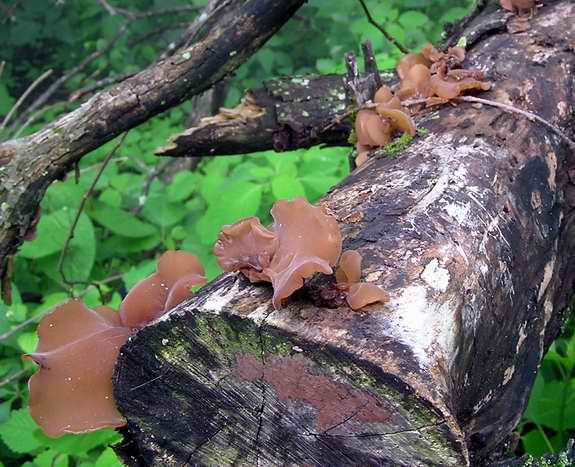|
Common Name: Wood Ear, Tree Ear, Cloud Ear, Judas's Ear Fungus, Black Fungus, Mo-Ehr ("little ear" in Chinese) Scientific Name: Auricularia auricular-judae (Latin auris meaning ear) A thin, rubbery, ear-shaped fungus that grows in clusters on decaying logs and stumps of deciduous trees characterized by a smooth, almost waxen upper surface that is reddish-brown in color and a hairy undersurface. Potpourri: The Mo-Ehr is actually an Asian species (Auricularia polytrica) that is closely related to the North American Wood Ear. Their similarity in edibility and appearance has led to the use of synonymous common names to refer to both. The "little ear" has been cultivated in China since as early as 600 CE and is widely used in Chinese cooking, particularly in hot and sour soups. In 1994, production of Auricularia was 420 million kilograms, 8.5% of total cultivated mushrooms world-wide. Auricularia has been used in traditional Chinese folk medicine for millennia as a treatment for everything from postpartum weakness to hemorrhoids. Recent laboratory testing revealed that the fungus had a hypoglycemic effect on obese mice and that it reduced the serum LDL cholesterol level of rats by 24%. The lowering of cholesterol and blood sugar may explain the extent of its use in China as a medicinal, as these therapeutic benefits would ameliorate many medical conditions due to "blood-thinning." The name Judas's Ear given to the Auricularia derives from the legend that the tree on which Judas Iscariot hanged himself in atonement for the betrayal of Jesus sprouted ears as a visible curse to his actions. |
